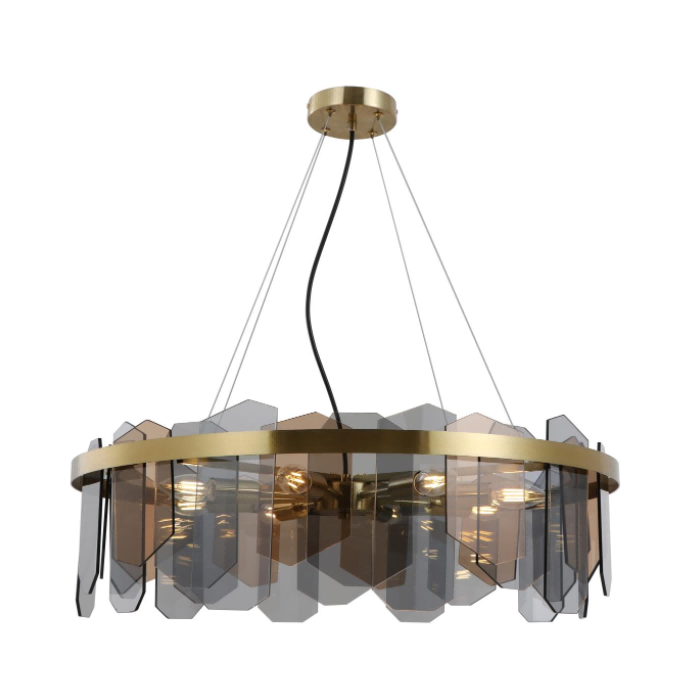- English
- Español
- Português
- русский
- Français
- 日本語
- Deutsch
- tiếng Việt
- Italiano
- Nederlands
- ภาษาไทย
- Polski
- 한국어
- Svenska
- magyar
- Malay
- বাংলা ভাষার
- Dansk
- Suomi
- हिन्दी
- Pilipino
- Türkçe
- Gaeilge
- العربية
- Indonesia
- Norsk
- تمل
- český
- ελληνικά
- український
- Javanese
- فارسی
- தமிழ்
- తెలుగు
- नेपाली
- Burmese
- български
- ລາວ
- Latine
- Қазақша
- Euskal
- Azərbaycan
- Slovenský jazyk
- Македонски
- Lietuvos
- Eesti Keel
- Română
- Slovenski
- मराठी
- Srpski језик
How to Clean the Dual-Color Glass Brass Finish Pendant Light When It is Dusty?
2025-05-08
As a decorative lighting device, the cleaning and maintenance of the dual-color glass brass finish pendant light must take into account both functionality and appearance integrity. The main body of the dual-color glass brass finish pendant light is composed of a double-layer tinted glass cover and a brass frame. The glass surface is achieved through an ion replacement process to achieve a gradient or color separation effect, and the brass part is usually electroplated to form an anti-oxidation finish. The dust accumulation phenomenon is mainly caused by electrostatic adsorption and environmental particle sedimentation. The cleaning process must avoid secondary damage caused by material characteristics.

The glass cleaning in the dual-color glass brass finish pendant light requires the use of a soft cloth with low fiber shedding, combined with a neutral detergent to avoid corrosion of the coating. The joint area at the dual-color interface is prone to hiding fine dust, and the wiping path should be unidirectional along the direction of the glass texture to prevent cross friction from destroying the optical uniformity of the surface. The cleaning of brass parts requires the use of a curing agent designed specifically for metals to avoid chlorine or acidic components that cause oxidation and peeling of the electroplating layer. The cleaning cycle needs to be adjusted dynamically according to the ambient dust concentration. High-frequency dry cloth dusting can reduce the frequency of deep cleaning.
The protection of the internal electronic components of the dual-color glass brass finish pendant light requires power off during cleaning to avoid liquid infiltration and short circuit. The movable parts of hinges and connectors need to be cleaned with air-blowing tools to prevent mechanical structure jamming. In long-term maintenance, the impact of ultraviolet rays on the color of brass can be delayed by regularly applying protective wax, and the attenuation of glass light transmittance depends on the integrity of the surface oleophobic coating.



